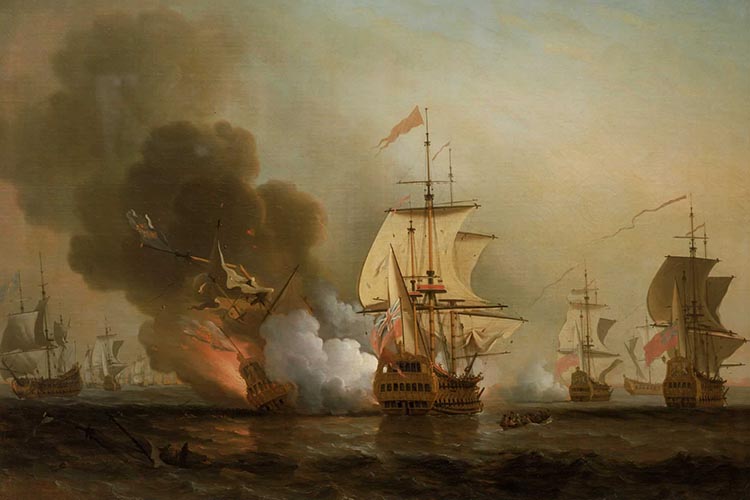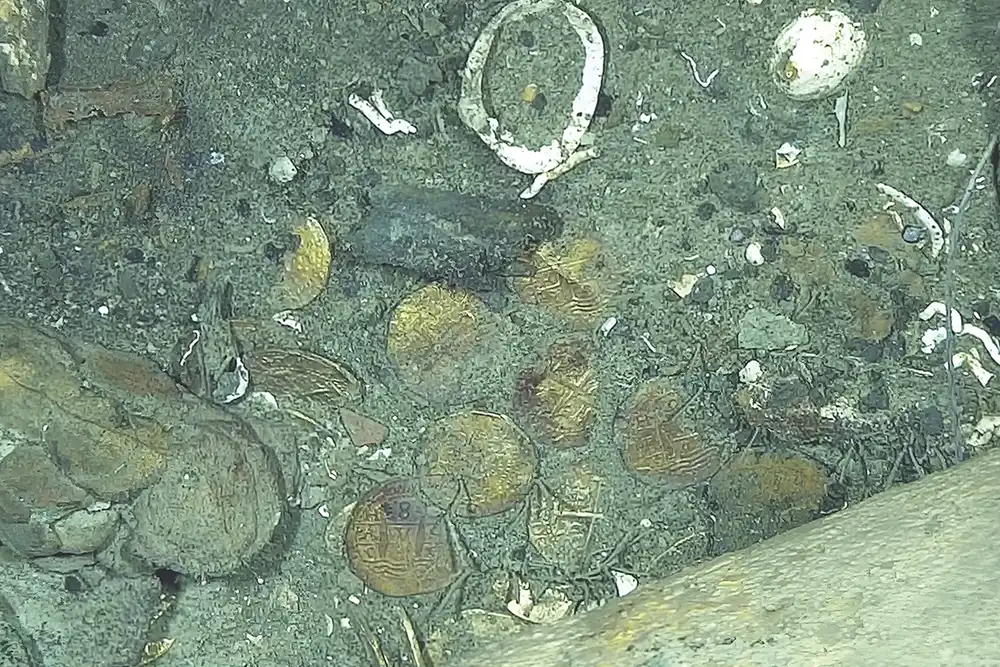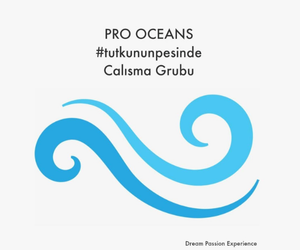A new survey of the sunken Spanish galleon, San José, by Colombian researchers has discovered a trove of gold coins, providing more evidence confirming the ship’s identity.
Dubbed the ‘Holy Grail of shipwrecks‘ for the hoard of treasure she was carrying, San José was the flagship of the Spanish Treasure Fleet, reportedly laden with 200 tons of gold doubloons, silver and emeralds at the time of her sinking.
The loss was of huge significance at the time, as San José’s cargo was intended to finance Spanish forces in the War of Spanish Succession fought between European nations during 1701-1714.
Described as ‘the first world war of modern times’, the conflict arose following the death of King Charles II of Spain who, on his deathbed, ceded his crown to the grandson of King Louis XIV of France.
Uneasy at the thought of the unification of France and Spain, Britain, Prussia and Austria united as allies to restore the balance of power in Europe.
San José and the convoy she was leading were intercepted en route from Peru to Spain by the British Royal Navy on 8 June 1708. She sank with the loss of all but 11 of her crew after a massive explosion tore through her gunpowder stores following a battle with the British warship Expedition.
The treasure – estimated to be worth between $16-$20 billion in today’s money – was thought to have been lost with her.

Controversial discovery
The galleon’s discovery has become a subject of much controversy, partly over who first found the wreck, but mostly over who actually owns the treasure.
The arguments began in 1980 when the Glocca Morra Company – a group of US explorers and investors now named Sea Search Armada – claimed to have found the wreck.
According to Sea Search Armada, the search was abandoned after the Colombian government backed out of an agreement to split the proceeds from the treasure’s recovery. The company subsequently mounted a lawsuit claiming their share of the money, which is still being arbitrated in the Colombian courts.

The wreck was definitively identified in November 2015 by a team comprising researchers from the Woods Hole Oceanographic Institution (WHOI) and the Colombian Navy.
The discovery was announced by Colombian president Juan Manuel Santos in December of that year, however, WHOI was not permitted to disclose its involvement until May 2018, and the wreck’s location was protected as a state secret.
Several salvage missions have since been announced, but none were ever undertaken until an announcement by the current president, Gustavo Petro, in 2024 stating that the wreck would be recovered before his term of office ends in 2026.
Gold coins and Chinese crockery
The new survey by Colombian researchers, published in the Cambridge University Journal Antiquity, used remotely operated vehicles (ROVs) to search through the wreckage, which lies at a depth of around 600m (1970ft) in the Caribbean Sea.
The team photographed a collection of gold coins known as cobs, or macuquinas in Spanish, a type of irregularly-shaped hand-minted coin used throughout the Spanish Empire between the 16th and 18th centuries – often more familiarly termed as ‘pieces of eight’.
The coins were marked with symbols that identify them as having been minted in 1707 in Lima, meaning the ship carrying them must have sunk after that date.

Other finds on the wreck include Chinese porcelain from the Kangxi period of the Qing Dynasty between 1661–1722, and inscriptions on the ship’s cannons dating them to 1665.
Together, the findings suggest that the ship sank in the early 18th century, and the only ship that matches all the evidence is that of the galleon San José.
‘This case study highlights the value of coins as key chronological markers in the identification of shipwrecks,’ write the report’s authors.
‘The finding of cobs created in 1707 at the Lima Mint points to a vessel navigating the Tierra Firme route in the early eighteenth century. The San José Galleon is the only ship that matches these characteristics.
‘This find presents a rare opportunity to explore an underwater archaeological site and deepen our understanding of colonial maritime trade and routes,’ said the researchers. ‘However, it represents only the first step in a long-term project.
‘This body of evidence substantiates the identification of the wreck as the San José Galleon, a hypothesis that has been put forward since its initial discovery in 2015.’
Treasure ownership dispute

Who owns the treasure will undoubtedly be the subject of much discussion and legal wrangling in the years to come. Sea Search Armada insists the vessel surveyed in the latest expedition is the same ship they discovered in 1981.
Claims have been made by Spanish authorities, since San José was a Spanish ship carrying goods that belonged to Spain at the time of the sinking; Peru has lodged a claim on the basis that the coins were minted in Lima.
Also laying claim to the treasure are the indigenous Qhara Qhara people of Bolivia, who say it belongs to them as their ancestors were forced to work the gold and silver mines that are the source of the treasure.
Meanwhile, in 2020, the Colombian government passed a law saying that the wreck belongs to Colombia, because it sank in their nation’s waters.
Fortunately, at least for now, the ship will remain where it is, and the subject of scientific survey, rather than an international legal dispute.
‘This find presents a rare opportunity to explore an underwater archaeological site and deepen our understanding of colonial maritime trade and routes,’ conclude the report’s authors.
‘However, it represents only the first step in a long-term project. The initial phase focuses on non-invasive surveys, with no plans for object recovery or excavation until the entire site is fully characterised.
‘This careful and multidisciplinary approach ensures that the archaeological study will be thorough, providing valuable insights into eighteenth-century global contacts.’
The post New survey confirms wreck of San José sunken treasure galleon appeared first on DIVE Magazine.





